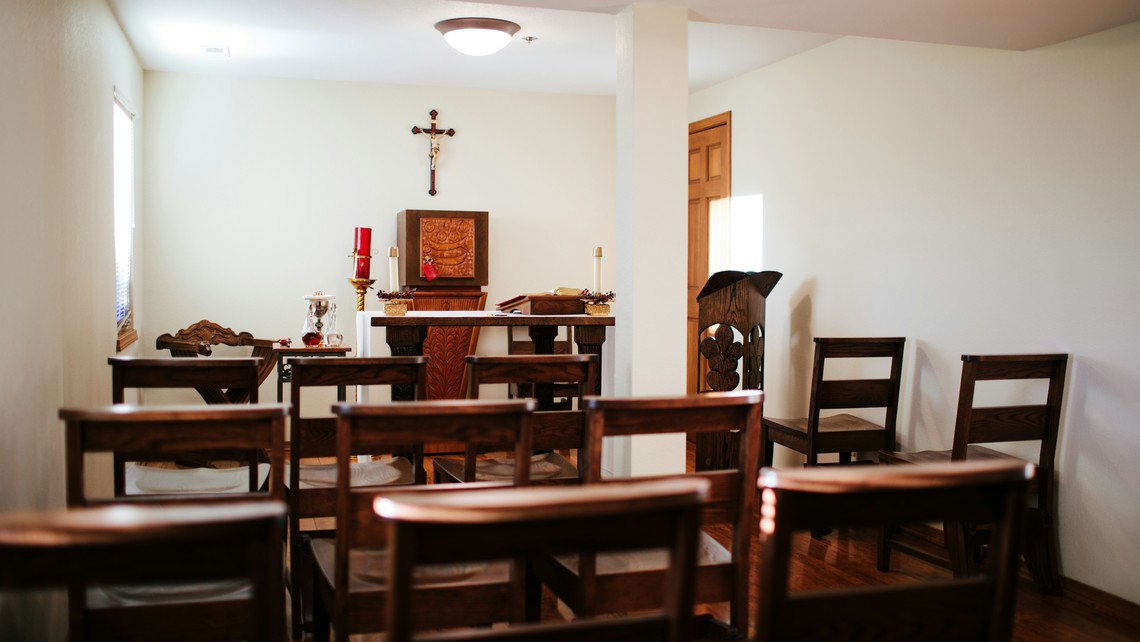
In the letter to the Hebrews,[1] the author makes a statement of faith that presumes two things about the exercise and practice of a faith in God. One, an active faith proposes a belief in God the Father, and that our hope rests on God, and two, an active faith exercises docility to the will of God, even when we may wonder if He is present during a time of great need. When the author of the letters to the Hebrews explains that faith is the assurance of things hoped for, the conviction of things not seen, he provides us with a particular language of faith that pertains to God’s constant invitation to develop a relationship with Him.
God’s invitation to have a loving relationship with Him leaves man to respond through the submission of his intellect and his will to God. The Catechism teaches us that with his whole being, man gives his assent to God the revealer.[2] The assent of faith the Catechism alludes to involves both a recognition of the will of God in one’s life, but it also entails the conscious turning away from any human act associated with sin that may impede our relationship with God the Father.
The theological virtue of faith represents a willful assent to the will of God. The Catechism provides more clarity about the nature and identity of an assent as,
A personal adherence of man to God. At the same time, and inseparably, it is a free assent to the whole truth that God has revealed. As personal adherence to God and assent to his truth, Christian faith differs from our faith in any human person. It is right and just to entrust oneself wholly to God and to believe absolutely what he says.[3]
Noted St. John Henry Newman scholar Fr. Ian Kerr, whom I had the privilege of studying under, describes St. Newman’s definition of an assent of faith as being;
Right faith is the faith of the right mind. Faith is an intellectual act, right Faith is an intellectual act, done in a certain moral disposition. Faith is an act of reason, viz, a reasoning upon presumptions. Faith ventures and hazards; right Faith ventures and hazards deliberately, seriously, soberly, piously, and humbly, counting the cost and delighting in the sacrifice.[4]
It is interesting to note that St. Newman became Catholic because he was convinced that the modern Roman Communion was the heir and the image of the primitive church.[5][i] Fr. Ker re-echoes this point even further, where he describes;
How it was the reservation of the sacrament in the tabernacle in Catholic churches, more than anything else, impressed and moved Newman. This is not what we might expect a convert as ignorant about Catholic devotional life as Newman claims he was, to emphasize above everything else, including the mass and ritual. Thus, when Newman informs a close Anglican friend, ‘I am writing next room to the Chapel – It is such an incomprehensible blessing to have Christ in bodily presence in one’s house, within one’s walls, as swallows up all other privileges . . . To know that He is close by – to be able again and again through the day to go in to Him . . .’ he is not only making a devotional or spiritual point. He is also saying something very significant about objectivity and reality. For it was this concrete presence in a material tabernacle which, above all, for Newman at any rate produced the deep impression of religion as an objective fact that so struck him about Catholicism – far more, for instance, than its discipline or its fervour.[6]
How does the assent of faith correspond to the grammar of Catholic education? Very simply, any educational institution that claims to adhere to the Catholic faith should possess as its primary purpose to assist the student in strengthening their ability to believe in God and develop an active relationship with Jesus Christ. This is what can be described as the development of the assent of faith in the student. A central component of the development of the grammar of Catholic education is the introduction to the story of salvation and its effects upon humanity. God made himself visible to Adam (Gen 1:20-31); Noah (Gen 6:9-22); Abraham (Gen 12:1-9); Isaac (Gen 35:1-15); Moses (Ex 3:1-12), etc. An assenting faith must be rooted in the knowledge and understanding of who God is as Abba, Father, Creator, and life-giver.
The language utilized within a Catholic educational setting should convey a salvific message of conversion, where students begin to know and understand that they are children created in the image and likeness of God, have infinite value from our Father in heaven, and that He wants everyone to join Him in heaven. The Catechism of the Catholic Church reminds us of the importance of this language; We do not believe in formulas, but in those realities they express, which faith allows us to touch. The believer's act of faith does not terminate in the propositions, but in the realities which they express. All the same, we do approach these realities with the help of formulations of the faith which permit us to express the faith and to hand it on, to celebrate it in community, to assimilate and live on it more and more.[7]
Dear Jesus, help me to spread Your fragrance wherever I go. Flood my soul with Your spirit and life. Penetrate and possess my whole being so utterly that my life may only be a radiance of Yours. Shine through me and be so in me that every soul I come in contact with may feel Your presence in my soul. Let them look up and see no longer me, but only Jesus!
Stay with me, and then I shall begin to shine as You shine, so to shine as to be a light to others. The light, O Jesus, will be all from You; none of it will be mine. It will be you, shining on others through me. Let me thus praise You the way You love best, by shining on those around me. Let me preach You without preaching, not by words but by my example, by the catching force of the sympathetic influence of what I do, the evident fullness of the love my heart bears to You.
Amen.
St. John Henry Newman
Doctor of the Church
Co-Patron of Catholic Education
[1] Heb 11:1-2
[2] CCC 143
[3] CCC 1501
[4] Kerr, Fr. Ian, Newman on Being a Christian, (University of Notre Dame Pres, Notre Dame, 1990), p. 6
[5] Kerr, p. 37
[6] Kerr, p. 43
[7] CCC 170






